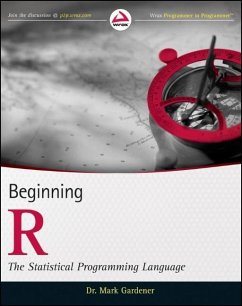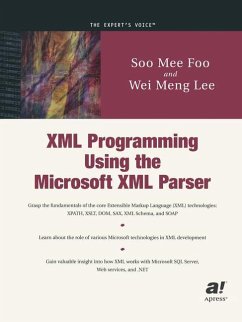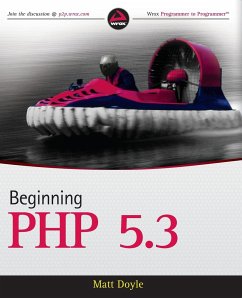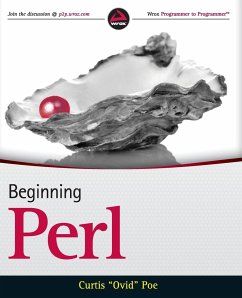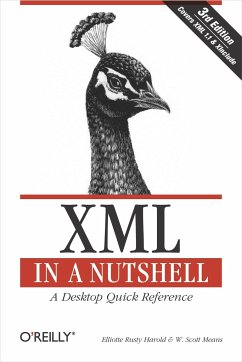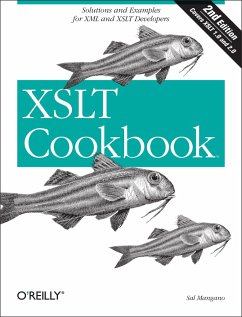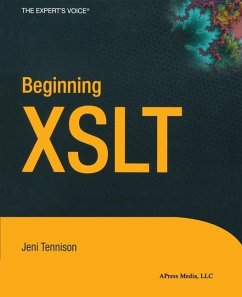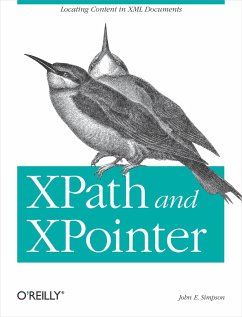
XSLT 2.0 and XPath 2.0 Programmer's Reference
Versandkostenfrei!
Versandfertig in 2-4 Wochen
70,99 €
inkl. MwSt.
Weitere Ausgaben:

PAYBACK Punkte
35 °P sammeln!
This book is primarily a practical reference book for professional XSLT developers. It assumes no previous knowledge of the language, and many developers have used it as their first introduction to XSLT; however, it is not structured as a tutorial, and there are other books on XSLT that provide a gentler approach for beginners.
Combining coverage of XSLT 2.0 and XPath 2.0 into one book, this authoritative reference provides equal weight to the powerful new features of XSLT 2.0 and XPath 2.0 and the established capabilities of the 1.0 versions. Author Michael Kay has created his own implementation of XSLT 2.0 (Saxon), and he puts his unique knowledge to work in this detailed reference to the elements of the XSLT 2.0 language and the fundamentals of XPath, complete with syntax, practical usage advice, and examples.
The book begins by teaching the essential concepts behind the language, knowledge you need if you are going to write good code rather than just working code. You will discover how XSLT and XPath differ from other languages, and how you use them to create effective web-based applications. The central chapters provide meticulous coverage of the language features of XSLT 2.0 and XPath 2.0. You will return to this reference whenever you encounter new programming challenges. You finish with detailed case studies highlighting real applications to give you insights you would otherwise gain only from months of practical experience.
What you will learn from this book
All the XSLT elements you can use in a stylesheet and the detailed rules for the syntax and semantics of each
How Path expressions enable you to navigate around the structure of an XML document
How you can improve your stylesheets by taking advantage of the XML Schema definitions of input and output documents
How to take advantage of vendor extensions without losing portability
Techniques for taking advantage of XSLT to write real applications
Who this book is for
This book is for experienced programmers who are looking to become proficient with XSLT 2.0. Previous experience with XSLT or XPath is not necessary. However, a working knowledge of XML, HTML, and web architecture is beneficial.
Wrox Programmer's References are designed to give the experienced developer straight facts on a new technology, without hype or unnecessary explanations. They deliver hard information with plenty of practical examples to help you apply new tools to your development projects today.
The book begins by teaching the essential concepts behind the language, knowledge you need if you are going to write good code rather than just working code. You will discover how XSLT and XPath differ from other languages, and how you use them to create effective web-based applications. The central chapters provide meticulous coverage of the language features of XSLT 2.0 and XPath 2.0. You will return to this reference whenever you encounter new programming challenges. You finish with detailed case studies highlighting real applications to give you insights you would otherwise gain only from months of practical experience.
What you will learn from this book
All the XSLT elements you can use in a stylesheet and the detailed rules for the syntax and semantics of each
How Path expressions enable you to navigate around the structure of an XML document
How you can improve your stylesheets by taking advantage of the XML Schema definitions of input and output documents
How to take advantage of vendor extensions without losing portability
Techniques for taking advantage of XSLT to write real applications
Who this book is for
This book is for experienced programmers who are looking to become proficient with XSLT 2.0. Previous experience with XSLT or XPath is not necessary. However, a working knowledge of XML, HTML, and web architecture is beneficial.
Wrox Programmer's References are designed to give the experienced developer straight facts on a new technology, without hype or unnecessary explanations. They deliver hard information with plenty of practical examples to help you apply new tools to your development projects today.






